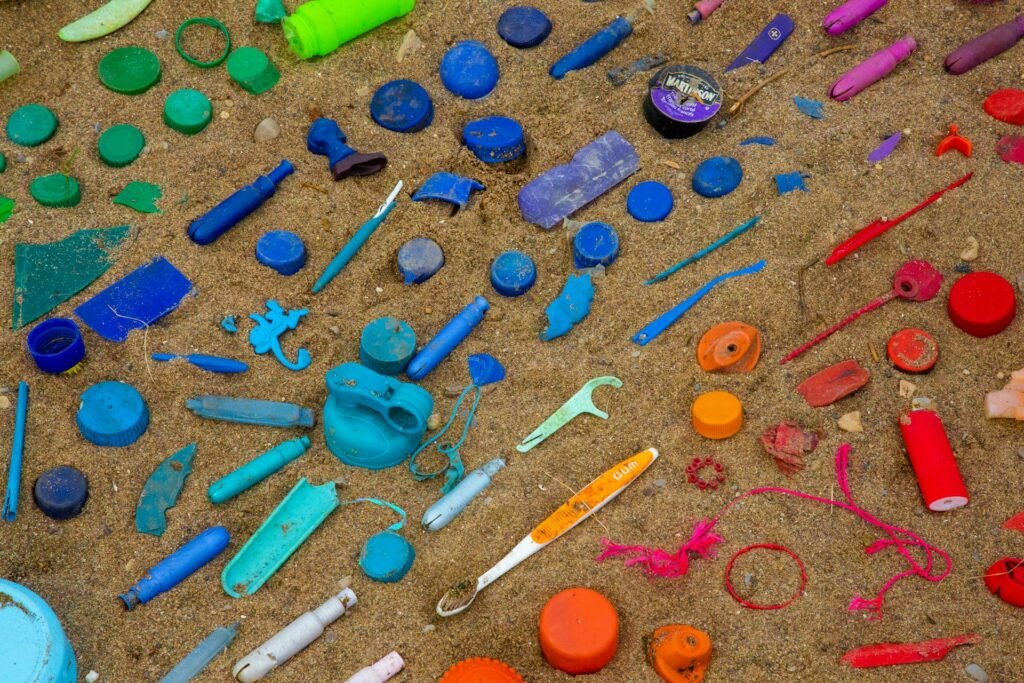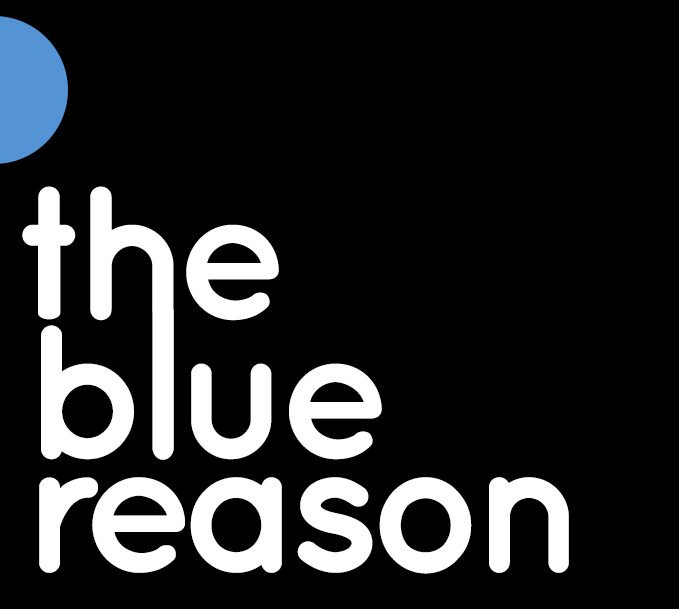
What are microplastics?
Microplastics are tiny plastic particles measuring less than 5 millimeters (.2 inches) in size. Picture a grain of rice. Many times they are so small we would need a microscope to see them. Nanoplastics are even smaller than microplastics. I will use the term microplastics to refer to both tiny particles. Microplastics result from the breakdown and shedding of particles of larger items such as bottles, packaging, clothing, carpet, furniture and toys, or are intentionally manufactured to be used in products like cosmetics, exfoliants, or industrial abrasives. They pose a serious concern to the environment, wildlife, and human health.
Harms of Microplastics
- Consequences for the Environment and Wildlife: Microplastics have infiltrated ecosystems worldwide, adversely affecting aquatic life and terrestrial habitats. They contaminate soil, water bodies, and the air, clouds, and snow leading to ecological imbalances and threatening biodiversity. Marine organisms, birds, land animals and insects ingest microplastics since it is present in their food/water sources (they have also been known to mistake microplastics for food) leading to ingestion and subsequent health issues. The accumulation of these particles in the digestive tracts of animals disrupts their normal functions, affecting reproduction, growth, and survival.
- Human Health Concerns: Recent studies have raised alarms about the potential risks associated with human consumption of microplastics. Microplastics have been found in food items, drinking water sources, and the air inside our homes posing a potential health risk as they may release harmful chemicals when ingested. More studies are being conducted to find out the extent to which these particles negatively affect humans. Information is available on the harm these particles have done to many insects and animals. That is enough to compel me to want to make some changes to avoid ingesting these micro/nano plastics.

How do Humans Consume Microplastics? They are in our Food, Water, Soil and Air.
Contaminated Food and Water: Microplastics find their way into the food chain through the consumption of contaminated seafood, salt, sugar, and other food products. Additionally, water sources, including tap water and most bottled drinks containing water, potentially contain microplastic particles.
Airborne Exposure: Microplastics can become airborne, and inhalation may lead to respiratory exposure. This can happen in many ways. For example, it has been shown that the breakdown and shedding of fabric in our clothes dryers launches particles in the air in and around our homes. Dryer vents that are routed outside, deposit particles in the soil up 30 feet away from the vent and the heat sends the particles into the air. The dust particles in our homes contain shedding plastics, fabrics, flooring material and these are moved by our heating and cooling systems. We inhale up to 7,000 microplastics daily. This raises concerns about the potential health impacts on individuals, particularly those living in urban areas with high plastic pollution levels.
What can we DO to protect ourselves from microplastics?
11 Things You Can Do to Reduce Your Personal Exposure to Microplastics Today
- Reduce Your Dependence on Single-Use Plastics: Minimize the use of single-use plastics such as bags, bottles, and packaging. They can decompose on a microscopic level due to sunlight exposure, friction, temperature changes and time. I like to transfer bulk foods that I buy such as rice, popcorn seeds, dried beans, nuts, spices etc into glass/stainless containers that I use over and over. If these plastics are not in your home, you won’t be exposed.
- Choose Microplastic-Free Personal Products: Check product labels for microplastic ingredients. The following are what to look for in toothpaste, soaps and other toiletries, detergents, packaging etc, These are the main offenders but there are more exhaustive lists that can be found with a quick google search.
Polyethylene (PE)/ Polyethylene/acrylate copolymer/ Polypropylene (PP)/ Polystyrene (PS)/ Nylon/ Polymethyl Methacrylate (PMMA)/ Polyacrylate/ Polyethylene-glycol (PEG)/ Polylactic acid (PLA)/ Polytetrafluoroethylene (Teflon)/ Polyisobutylene; (PIB)/ Polyvinylpolypyrrolido (PVP).
- Drink FILTERED water in ceramic, glass, metal bottles/containers and avoid single-use plastic bottles. Most freshwater contains microplastics. This water is the principal ingredient in most prepackaged, water, tea, sodas, energy drinks and beers. Countless tests have shown that we consume thousands of particles of microplastics in the ready-made beverages we drink daily. If you drink water that is filtered (in non plastic cups), you will be exposed to lower quantities of these particles because most filters including Pur, Brita and Life Straw filters claim to remove the majority of them from tap or bottled water.
- Do not cook your food in plastic containers, microwavable steam-in-bags, or plastic boil-in-bags. So many frozen vegetables are sold in bags claiming that they can be heated in the plastic bag in the microwave. Also many rice, legumes, and other grains come in perforated plastic bags that direct you to boil the food right in the plastic bag. I know it is written on the bags that you can, but don’t! Transfer the food to glass or ceramic cookware or dishes to heat them and you can avoid eating a ton of microscopic, melted, plastic particles.
- Run your vacuum often, daily if possible, to pick up dust which includes micro/nano particles. Remember, everything inside your home that is manufactured is constantly shedding tiny particles. You can tell this is true everytime you empty your vacuum cleaner’s dust container or change the filter on your air conditioner. Vacuuming often will keep these particles from accumulating in your home and ventilation system. A low-to-the-floor robot vacuum is great since the air it exhales remains low to the ground. All I have to do each day is push a button and then empty the receptacle. An upright vacuum takes more effort, but actually picks up more particles in my opinion. Whichever you choose the end result is that there is less dust/particles for you and your family to inhale or ingest.
- Buy loose-leaf tea and use a strainer instead of a single-use teabag, since many manufactured teabags are made with plastics and dunking them in scalding water will melt them into your drink.
- Use Pink Himalayan Salt on your food. Many studies show that almost all the store bought salt we put on our food is full of microplastics.(thousands of particles per pound). Sea salt has shown to have the highest levels (since our seas are so contaminated with plastics. Because pink Himalayan salts come from ancient, unpolluted sea beds, they aren’t as exposed to microplastic contamination.
- Skip the seafood and shellfish. When you eat fish from the sea you will, by default, eat all the microplastic it has ingested. Research estimates that the average person consumes the equivalent of 17 credit cards a year from seafood and shellfish.
- Wash clothing only when necessary, use cold water and hang clothes to dry whenever possible. This will lesson the shedding of microplastics in the synthetic fabrics (such as polyester, nylon, and acrylic) and fabric coatings. Hanging clothes to dry, as opposed to using a clothes dryer also lessons the quantity of microplastic particles that become airborne and get into our lungs as well as our soil.
- Do not use soaps, lotions, cleansers, scrubs or other products that contain microbeads to exfoliate, cleans, soften…The majority of microbeads are made of microplastics. Look for alternative products that use seeds or ground pits. There is no reason to ground microplastics right into your skin.
- Switch to natural wood or bamboo cutting boards and cooking implements. Plastic cutting boards, silicone or rubber coated whisks, tongs, spatulas etc shed and break down in the chopping, heating and cooking process. These microplastics end up in our food and drinks. I know you have a favorite spatula in your arsenal that you have been using for years that is deformed/half melted. Where to you think that plastic went?
This is not an exhaustive list of ways you can lessen your exposure to microplastics, but it is a start.
Once we know, we cannot unknow. Learn, Improve, Repeat!

